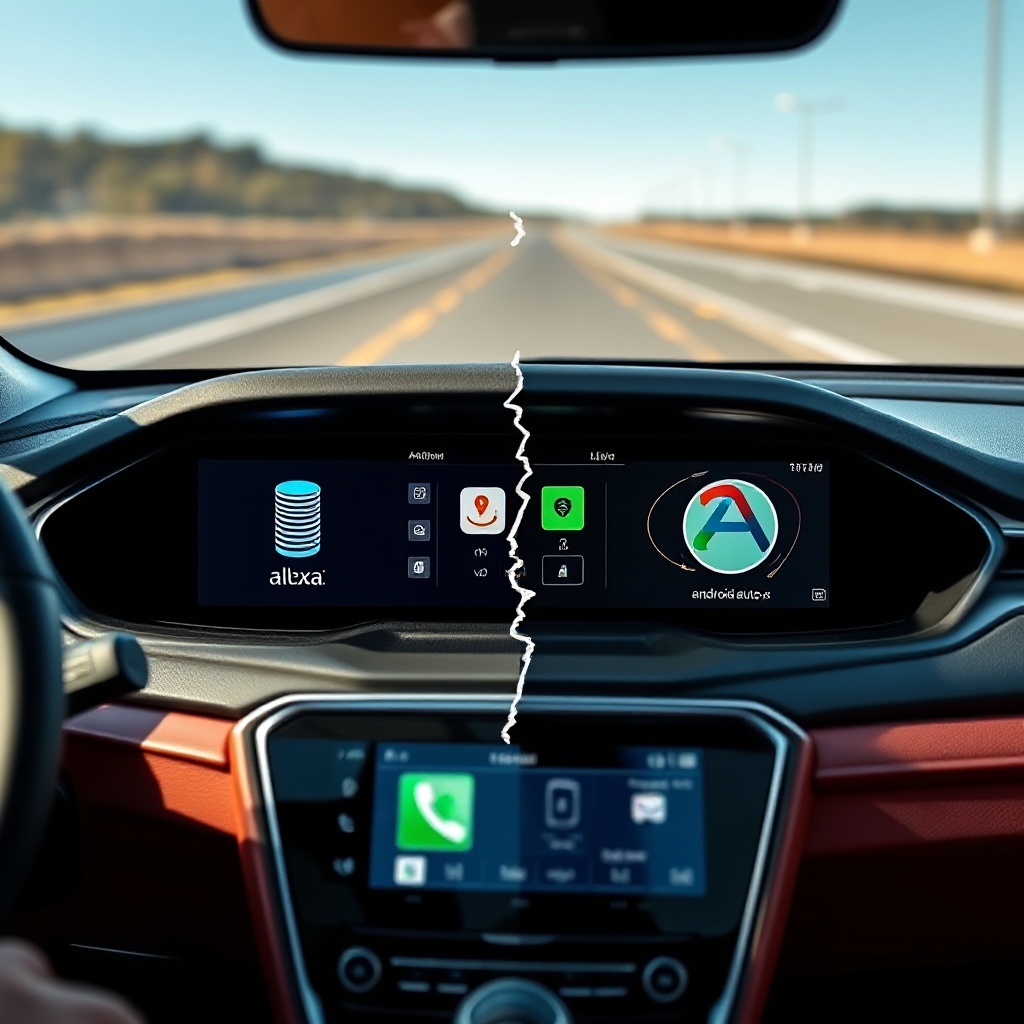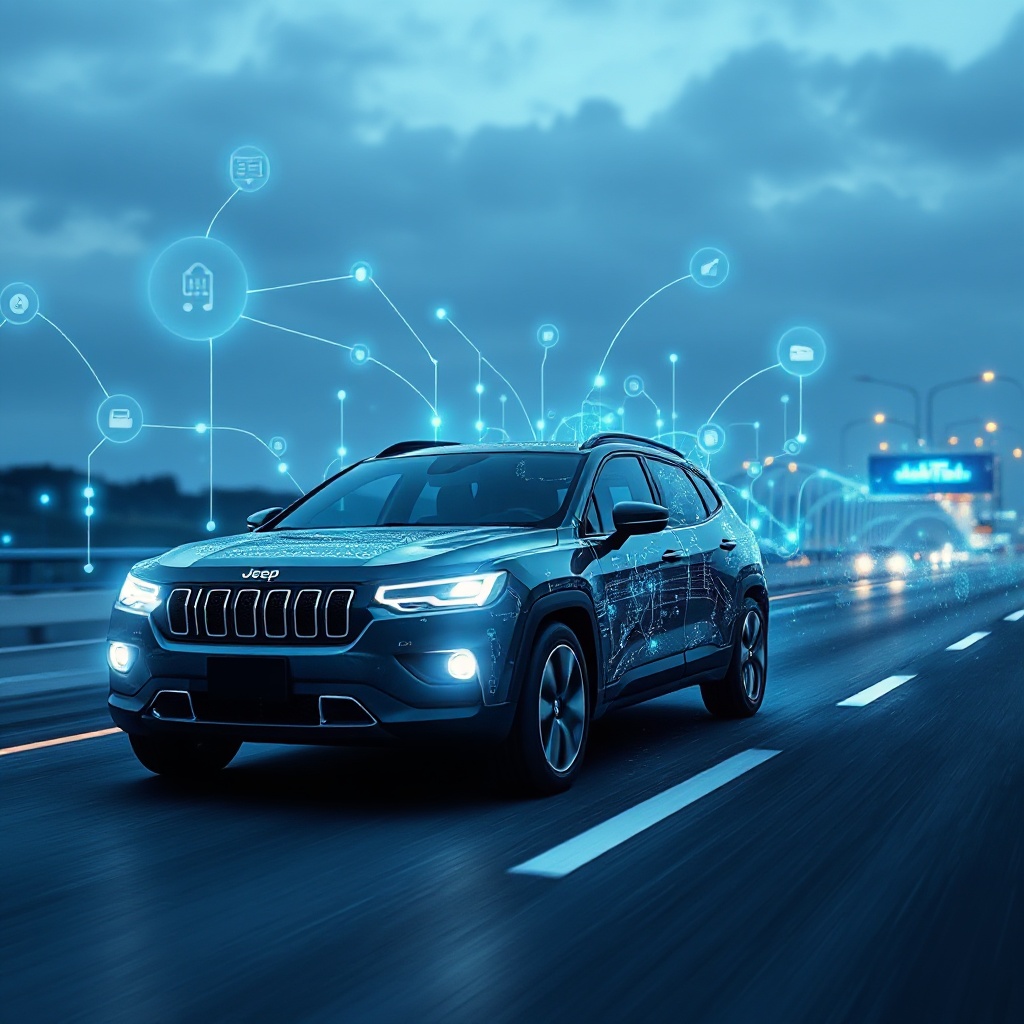
Stellantis and Amazon end SmartCockpit partnership due to integration challenges, as the automaker pivots to Android Automotive while maintaining its ambitious software revenue goals.

Drivetech Partners
The automotive tech industry faces a shift as Stellantis and Amazon have officially ended their SmartCockpit partnership that promised to revolutionize in-vehicle technology. This collaborative venture, announced in January 2022, aimed to bring Alexa voice capabilities, personalized settings, and AWS cloud services to Stellantis vehicles, but fundamental integration challenges across the automaker's diverse brand portfolio ultimately proved insurmountable.
Key Takeaways
The three-year partnership termination reflects broader challenges faced by traditional automakers in the software-defined vehicle transition
Stellantis is pivoting toward Android Automotive OS and open platforms while maintaining its $22 billion software revenue target
The company's investment in Airnity for IoT connectivity signals a strategic shift toward controlling its digital ecosystem
This breakup highlights the conflicting priorities between tech giants and automakers regarding data ownership and monetization
Legacy car manufacturers struggle to develop internal digital capabilities rather than relying solely on tech partnerships

The Dissolution of an Ambitious Partnership
The SmartCockpit initiative, once touted as a game-changing collaboration, was expected to transform how drivers interact with Stellantis vehicles across brands like Jeep, Peugeot, Fiat, and Chrysler. Originally scheduled for deployment in late 2024 or early 2025, the partnership promised features like driver recognition, adaptive climate settings, home automation integration, and seamless e-commerce experiences powered by Amazon's technology stack.
Despite the official end of the partnership, both companies have confirmed that existing Alexa integrations and AWS usage will continue in select models. The decision to terminate was described as mutual, allowing each company to refocus on creating customer value through alternative approaches.
Software Integration Challenges Expose Industry-Wide Issues

While no single reason was cited for the termination, the complexity of integrating Amazon's software across 14 diverse Stellantis brands presented a monumental challenge. This difficulty isn't unique to Stellantis—it reflects the broader struggles faced by legacy automakers transitioning to software-defined vehicle (SDV) architectures.
Established manufacturers with diverse model lineups find themselves at a disadvantage compared to companies like Tesla and BYD, which built their vehicles around integrated software platforms from the ground up. The partnership's collapse also highlights fundamental obstacles when traditional automakers partner with tech giants:
Conflicting revenue-sharing models
Different priorities regarding data ownership
Misaligned development timelines
Competing visions for customer experience
Technical incompatibilities between automotive and consumer tech ecosystems
Stellantis Shifts to Android Automotive and Open Platforms
Following the SmartCockpit cancellation, Stellantis is reconsidering its in-car technology strategy with strong signals pointing toward the adoption of Android Automotive OS by 2025. This shift represents a move toward open platforms and deeper integration with Google's ecosystem, including AI-powered assistants and advanced infotainment options.
Despite this setback, Stellantis maintains its ambitious goal of generating over $22 billion in annual software revenue. The company continues to launch new digital features like STLA Autodrive for automated driving capabilities, while expanding partnerships with AI company Mistral to develop in-car assistants with real-time voice support.
This pivot demonstrates that Stellantis isn't abandoning its digital transformation but rather adjusting its approach to focus on more standardized, widely-adopted technologies that can be implemented across its diverse brand portfolio.
Airnity Investment: Stellantis' IoT Connectivity Strategy

While the Amazon partnership has ended, Stellantis is doubling down on its investment in Airnity, a joint venture focused on developing global IoT network infrastructure for vehicles. This strategic investment allows Stellantis to create robust, always-connected vehicle services that don't depend on third-party tech giants.
The Airnity partnership helps Stellantis retain control over user data and connected experiences—a crucial aspect of modern automotive strategy. This approach aligns with Stellantis' larger €30 billion commitment through 2025 toward electrification and software development, emphasizing ownership of digital assets while maintaining advanced connectivity capabilities.
By investing in IoT connectivity through Airnity, Stellantis can build a foundation for future digital services without surrendering control to external technology partners. This strategy provides flexibility while ensuring the company maintains direct relationships with its customers.
The Future of Automotive-Tech Partnerships
The collapse of the SmartCockpit partnership offers important lessons for the future of automotive-tech collaborations. First, it demonstrates the need for agile, unified software strategies, especially for companies managing diverse global brand portfolios.
Automakers are increasingly recognizing the risks in ceding too much control to external tech firms regarding data, customer relationships, and monetization opportunities. This has led to a broader industry shift toward open-source or widely adopted platforms like Android over proprietary technology stacks that lock manufacturers into specific ecosystems.
Direct investment in flexible connectivity solutions (like Airnity) allows automakers to future-proof their offerings while maintaining ownership of core digital assets. For legacy automakers to succeed in the digital era, they must develop internal digital capabilities and form selective partnerships that support—rather than dictate—their long-term objectives.
Data Sovereignty: The New Competitive Edge
One of the most significant factors in the SmartCockpit termination is the growing recognition that control over customer data has become a critical consideration in automotive-tech partnerships. The end of this collaboration reflects automakers' increasing reluctance to surrender data access to tech companies.
Successful implementation of software-defined vehicles requires seamless integration across hardware, software, and connectivity components—all while maintaining appropriate data governance. Stellantis' shift demonstrates a strategic recalibration toward data ownership and platform control, with industry leaders developing hybrid approaches that combine proprietary systems with open standards.
This focus on data sovereignty isn't merely about privacy concerns—it represents a fundamental understanding that vehicle data has enormous value for developing new services, improving existing products, and creating additional revenue streams. Automakers that maintain control of this data position themselves more strongly for future innovation and monetization.
The Challenging Path to Software-Defined Vehicles
The transition to software-defined vehicles represents a fundamental transformation in how vehicles are designed, built, and maintained. Traditional manufacturers face significant obstacles stemming from legacy systems, diverse model lineups, and varying regional requirements.
Key challenges include developing consistent software update capabilities, standardizing hardware platforms, and delivering uniform user experiences across vehicle models. The SmartCockpit partnership's failure highlights the substantial gap between automotive industry capabilities and tech company expectations.
Companies that successfully navigate this transition will gain significant competitive advantages in user experience and operational efficiency. However, the path forward requires automakers to make difficult choices about their core competencies, partnership strategies, and technology investments.
The Evolving IoT Landscape in Automotive
Beyond the SmartCockpit partnership, the broader IoT landscape in automotive is evolving rapidly. Vehicle IoT strategies are increasingly focused on end-to-end solutions rather than individual features or services, with connectivity becoming a core competency rather than merely an add-on feature.
The partnership's end reflects a broader trend of automakers developing in-house IoT expertise rather than outsourcing this critical aspect of modern vehicles. Complex factors like data security, privacy concerns, and regulatory compliance add layers of complexity to automotive IoT implementations.
Future competitive advantage in automotive will come from creating seamless, personalized experiences across multiple touchpoints and services. The companies that master this integration—while maintaining appropriate control over their digital ecosystems—will be best positioned to lead in the next era of mobility.
Sources: carscoops.com - Stellantis Dumps Amazon, Opening The Door To Android, autobodynews.com - Stellantis, Amazon End SmartCockpit Partnership Amid Software Strategy Shift, xtb.com - Amazon-Stellantis SmartCockpit Partnership Ends After Three Years





